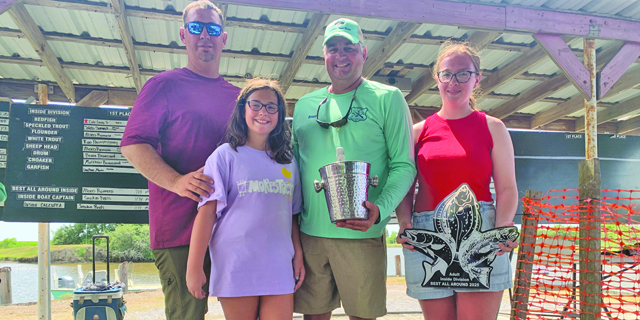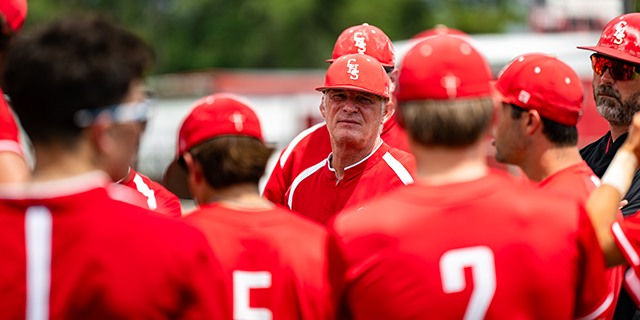Drink to your health, and add a cup of history
Published 5:00 am Wednesday, June 27, 2018
In the poem, “The Rime of the Ancient Mariner” written by Samuel Taylor Coleridge in 1797, a sailor tells the tale of a sea voyage to a man on his way to a wedding. In his tale, he describes the condition which has become a well-known phrase, “Water, water, everywhere, nor any drop to drink.” In his thirst, the sailor was lamenting the fact that he was surrounded by only non consumable, salty sea water.
In these extremely hot, humid days we also should be aware of the importance of consuming enough water for hydration. Guidelines given by the Center for Disease Control recommends staying well hydrated. This means consuming enough fluids before feeling thirsty, an indication a person is already behind on fluids. Hydrating before and after work, replacing electrolytes by eating regular meals and avoiding energy drinks, caffeinated and alcoholic beverages are some of the CDC recommendations for hydration.
Trending
The combination of high humidity with elevated temperatures can be especially dangerous as the body has a harder time cooling off. According to the CDC, when working in heat drink 1 cup (8 ounces) of fluids every 15 to 20 minutes, adding up to one quart per hour.
The necessity of consuming liquids was known to ancient man. In the book, “The History of the World in 6 Glasses,” the author, Tom Standage, tells how history was impacted by man’s desire for other beverages. As civilization and technology advanced, specially made beverages were used in religious rites and for the sharing of information at social gatherings. Other uses, such as a means of currency, safer alternatives than contaminated water sources, medicine, or as a symbol of status, were also developed as time went on.
When humans migrated out of Africa approximately 50,000 years ago, they lived in nomadic bands, and moved from place to place as they caught fish, edible plants, and found water sources. When pottery was made, these early men were able to form communities and store their grain and cereal for later days. When it was discovered that water poured into containers of grain produced a sweet liquid, the first beer was produced.
From archeological evidence, wine was first produced between 9000 and 4000 BC. The earliest physical evidence of wine, dating back to 5400 BC, was found in a pottery jar with a reddish residue. The appreciation of wine, along with wine from different areas, began with the Greeks and was followed by the Romans. Social status was determined by the type of wine served in some circles. That sentiment still exists in modern society.
In the Eighth Century Arab world, a scholar named Hayyan devised an improved form of distillation apparatus, or still. He found that the distillation process caused wine and other substances to become stronger. This led to the production of alcohol, a beverage highly valued in the Age of Exploration as Europeans explored the seas and established colonies around the world. During the 15th Century, the process spread by way of another new invention, the Gutenberg printing press. Alcohol evolved from a medicinal product to a recreational drink.
When the English began establishing colonies in the New World, they faced many challenges. A reliable source of alcohol was important. Since wine and beer were not options because of the harsh winters and inability to grow grapes and grain, rum, made from leftover molasses imported from the West Indies, became the drink of choice. Whiskey regained popularity as settlers moved westward and grains such as barley, wheat, rye and corn were more suitable to the temperate climate.
Trending
Coffee originated in the Arab world and was introduced in Europe in the 17th Century. It proved to be a safer alternative to contaminated drinking water and was favored for its stimulating effects in the morning.
Tea, originating in southwest China and brought to Europe in the 16th Century, was highly traded and became a symbol of England’s power. It was this same beverage that set the stage for the Boston Tea Party in December of 1773 where American colonists, dressed as Mohawk Indians, dumped 342 chests of tea overboard in defiance of British authority.
Soda water was produced when a British scientist and clergyman noticed gas bubbles emitting from the liquids in a nearby brewery, and thinking they had a medicinal effect, captured them in liquid. He made an artificial product by adding sodium bicarbonate, resulting in the name “soda.” Adding lemon juice and sugar to this new beverage, he may have made the first carbonated drink.
Coca-Cola, the carbonated beverage which was originally made from coca leaves and kola nuts and intended for medicinal use, was invented in the late 19th Century by John Pemberton. With ingenious marketing tactics, Coke, as it is now referred to, has dominance around the world in the soft drink industry.
While trying to keep cool this summer, and remembering and savoring all the delicious drinks that history has brought us, the following recipe for old-fashioned lemonade might provide a refreshing memory from your own past.
OLD FASHIONED LEMONADE
6 lemons
1 cup white sugar
6 cups of cold water
Juice lemons to make 1 cup of juice. In gallon pitcher combine 1 cup lemon juice, 1 cup of sugar and 6 cups of cold water. Stir, adjust water to taste. Chill and stir over ice. May add pureed strawberries, raspberries, lemon slices, or fresh mint leaves for extra flavor.
Catherine Wattigny, New Iberia





